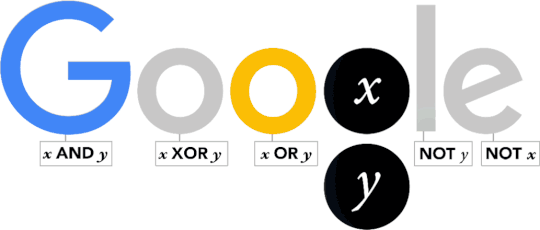
Boolean search in recruitment is not a modern concept. In fact, as a recruiter, it is probably something you use everyday without even realising it. The laws of Boolean search were invented by English Mathematician George Boole in The Mathematical Analysis of Logic (1847) and have become a fundamental building block for all digital devices. It is an astonishing thought but, without his laws, Google would never have existed in the way we know it today. That is why Google paid its own special tribute in 2015 to mark Boole’s 200th birthday, demonstrating how his laws work:

But before losing yourself in the never ending animation, let’s explain what Boolean search is in recruitment and how it is used effectively.
What Is Boolean Search In Recruitment?
Boolean search in recruitment is the act of leveraging large databases, such as your recruitment CRM, LinkedIn, Indeed, or for Google to perform specific searches in order to find relevant candidates quickly. Using Boole’s laws, recruiters can refine their search results in a number of ways which can be particularly effective for finding a range of active and passive candidates for your open vacancies.
Once you have exhausted your standard CV and profile searches, conducting more specific Boolean searches can be a dynamic alternative that may unearth hidden talent that isn’t easily accessible through common search function.
Boolean literate recruiters can perform incredibly complicated search strings to meet your every job requirement. Below is a real life example of a search string constructed to search for a Senior Financial Analyst:
Analy* NEAR Financ* AND (Retail* OR e-commerce OR ecommerce) AND budget* AND Plan* AND forecast* AND risk* AND Excel AND (PowerPoint OR “Power Point” OR Tableau OR SAP) AND (Access OR SQL OR “BO” OR “Business Objects”)
Although this looks complicated, by breaking it down into its individual operators, it only utilises the 6 basic operators in a Boolean search. So what are they?
The 6 Basic Boolean Search Operators For Recruiters
1. AND
The AND operator is used when you want to include two (or multiple) criteria in your Boolean search. The AND operator is generally used to narrow your search results. By inputting a search for Recruitment AND Manager, you are requesting results with both Recruitment and Manager in it.
2. OR
With the OR operator, you are requesting the search you want to see multiple entries in the results, and used to expand your Boolean search results. So a search for Recruitment OR Manager will return any results containing Recruitment and any results containing Manager. It can be useful when different words to say the same thing, for example, Recruitment AND (Manager OR Consultant OR Agent OR Advisor)
3. NOT
As you can probably estimate, the NOT operator is used to exclude specific requirements. You can also use the minus symbol followed by your unwanted term (without leaving a space between both). An example is:
(Recruitment AND Manager) NOT Consultant
(Recruitment AND Manager) -Consultant
4. Brackets ()
Brackets are used in a very similar way to the rules of the BODMAS acronym that you might still remember from your high school maths lesson. The important rule being that the calculation inside the brackets always comes first. In Boolean search, it is similar in that, the section inside the brackets always takes priority over the other elements.
For example; when you enter Recruitment AND Manager OR Consultant, are you asking the search to prioritise Recruitment AND Manager or Manager OR Consultant? By using brackets, you can easily explain to the search engine how you want the search string to be read. So the search becomes: Recruitment AND (Manager OR Consultant). This search string will return any results with Recruitment Manager and any results with Recruitment Consultant.
5. Quotations “”
Quotations are used to search for an exact phrase. By adding quotations around two or more words, you are telling the search to treat it as one keyword. Therefore a search including “Recruitment Manager” would only return results with that exact phrase in the body of the text. Quotations are only used if you are 100% certain of the exact phrase you’re looking for.
6. Asterisk *
The asterisk function is usually used to widen your search. For example if you wanted to do a search for anything related to Admin, use admin* and the search will return results like; administrator, administration, administer, administered. By inputting the stem of the word with an asterisk afterwards, you’re telling the search to include all words related to that stem.
How To Apply The 6 Basic Boolean Search Operators
Why not now try and create your own Boolean searches within your recruitment CRM, LinkedIn, job boards like Indeed and Monster or in Google. By practicing and becoming Boolean literate and combining the basic rules of Boolean search, you can perform searches that would otherwise seem impossible, saving you time in searching through thousands of CVs and providing you with more targeted and relevant results.
Now that you know the basics of Boolean search, learn 5 intermediate Boolean search operators to build even better search strings.
Are you thinking of investing in new recruitment software for your recruitment agency? Download our free step-by-step buying guide today.
